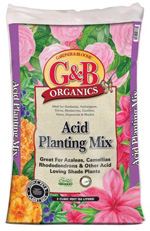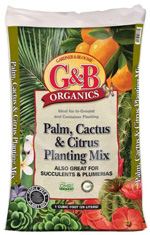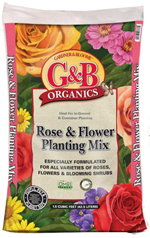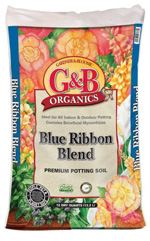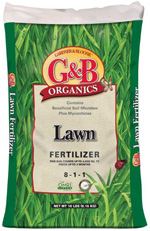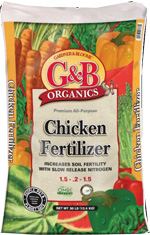|

|
|
Featured Quote: |
|
 |
"There can be no other occupation like gardening in which, if you were to creep up behind someone at their work, you would find them smiling." |
| Arriving Soon |
| Asclepias fascicularis - Narrow Milkweed |
This California native grows to 3 feet and has pale, creamy pink blooms. Fairly drought tolerant once established, and takes a wide range of different soil textures. The nectar provides food for butterflies, bees and wasps. We will have a limited quantity available in 1 gallon, arriving later this week. Add this native to complete your butterfly garden. |

|

|
Getting the Most from Cut Flowers |
 |
|
An arrangement of fresh flowers will brighten a room, bringing the beauty of nature indoors. Picking fresh flowers that you have grown yourself is one of the delights of gardening, but whether you are picking your own flowers or buying cut flowers, you will want to do all you can to get the most from your arrangement. Picking Flowers Buying Cut Flowers Clean Vases Clean Water and Preservatives Preparing the Flowers Daffodils, jonquils and tulips should not be placed with other flowers immediately after cutting because their secretions can block the stems of other flowers, causing their vase-mates to collapse. Place them in a separate vase for an hour or two. Then seal the tips of the stems by dipping them in very hot water before adding them to a mixed arrangement. If flowers develop a bent neck, they probably have an air lock in the stem and are unable to absorb water properly. Recut the stems under water and place them in cool water for a couple of hours. Most flowers absorb water best if cuts are made between nodes or joints. This is certainly true of carnations and hydrangeas. Never crush the stems, as the damaged tissue will not absorb water well, and the water will become polluted. Sharp, clean cuts are best. A number of flowers respond well to having the stems scalded for a few seconds. Place the ends of the stem in boiling water for about 20 seconds, but be careful to keep the heads out of the steam. |
 |
|
Blossom end rot happens not just with tomatoes, but also with peppers, squash and watermelons. There are a number of reasons for blossom end rot, all of which start because the plant has an inability to obtain calcium from the soil or the soil is deficient in calcium. Blossom end rot is a sunken, dark area on the blossom end of the fruit, at the end opposite the stem. As the fruit develops, the rot area enlarges and can grow mold in the damaged area. A number of factors can contribute to blossom end rot, in addition to calcium deficiency. These include irregular watering, soil mineral imbalance, root damage, broad temperature swings, or even high soil salt content. To compensate for some of these, deep water regularly instead of lightly watering daily; mulch to keep moisture in the soil; avoid high nitrogen foods that encourage foliage growth but not flower growth; avoid using fresh manure (once the plants are in the garden) because it is high in salt content. But most important of all is the lack of calcium in the soil. To prevent blossom end rot, feed your vegetables regularly with a vegetable food high in calcium. On existing plants showing blossom end rot, spray the foliage and fruit with a calcium spray. |

|
White grubs are damaging pests that begin invading lawns in early spring and again in summer. Grubs do their damage below ground, so the problem often goes undetected until too late. Beetle grubs can turn a fine looking lawn into a patchwork quilt of yellow spots. In addition, birds and other animals will often start digging up your lawn looking for the tasty grubs to feed on. The grubs are actually larvae of beetles and other insects; most are C-shaped and off-white with a dark head. There are several types of grubs that are capable of damaging lawns, with two life cycles in a year. When you have grubs, the damaged areas of grass can be easily lifted, and many times the grubs can be seen feeding on the edge of the healthy grass in the damaged area. Natural controls include beneficial nematodes or milky spore (a disease that specifically attacks Japanese beetle grubs), although it takes a number of applications for milky spore to become established in lawns. It's an excellent long-term solution, but doesn't help much right now. There are chemical products that are very effective for a grub problem, but only at certain times of year. |
 |
|
How do I know if I have bad drainage?
Answer: First, your plants won't look happy. (Surprise) The foliage will look dull and lack the luster and intense color of a healthy plant. If it is a blooming plant, it may produce few blooms or none at all. When the condition becomes severe, the plant will drop its leaves from the interior first, eventually working its way to the leaf tips. If the soil is wet at the bottom of the hole, dig it deeper and back-fill with at least six inches of gravel. Then build a mound that will raise the plant 3-6 inches higher than the surrounding soil level and re-plant so that the top of the root ball is level with the top of the mound. If that doesn't work, you may need to find a different location for the plant. |
 |
|
You will need at least 8 (10-inch) bamboo skewers for cooking the meat. Ingredients:
Directions:
Yield: 4 servings |
 click here for a printer friendly version of this page
click here for a printer friendly version of this page |
Written content © 2004-2014 Garden Partners LLC, or respective authors. All Rights Reserved. Privacy Policy. All written content contained in this site is protected by United States copyright law and may not be reproduced, distributed, transmitted, displayed, published, or broadcast without prior written permission of Garden Partners, LLC. You may not alter or remove any trademark, copyright or other notice from copies of the content. Would you like a newsletter like this for your nursery or garden center? Please feel free to look at what we have to offer and contact us for your garden center marketing solutions. |




